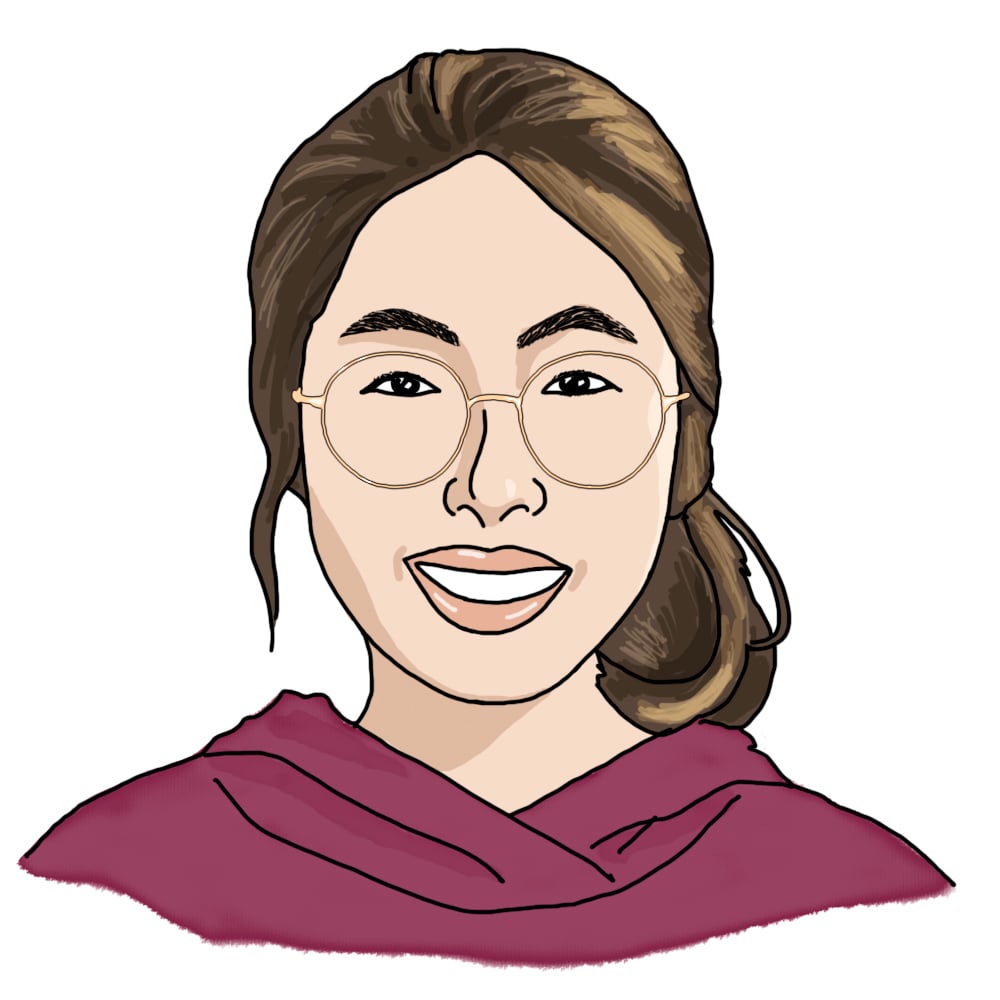
Final projects from the fall by Jenny B. '25, MEng '26
three coding projects and an alien in disguise
I had four final projects this past semester. As busy as I was for the last several weeks of the semester, I was so relieved that I didn’t have exams. I love making things, and I hate exams.
6.8371 – Digital and Computational Photography
Final report
I only took this class because the course ratings were high, but it ended up being one of my favorite classes that I’ve taken. We learned how to create image-editing effects in C++ that would normally take much longer to replicate manually in Photoshop.
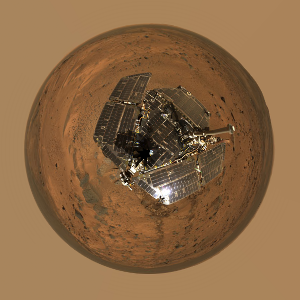
My favorite pset was about autostitching, or automatically stitching together separate images of the same scene. Autostitching can be used to make panorama shots and even “mini-planet” images, like this! (credit: 6.8371 staff, NASA)
We were given a list of options to choose from for our final project. I chose “Deconvolution and Poisson Image Editing.” Basically, image deconvolution tries to make an image clearer by algorithmically undoing optical distortions and blurring effects, while Poisson image editing is a method of automatically combining two images together in a way that looks seamless and natural as possible.
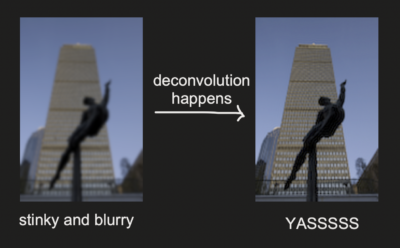
Image deconvolution
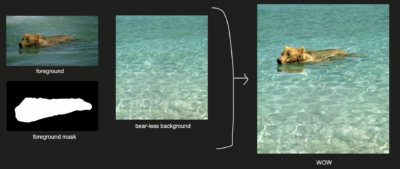
Poisson image editing — it’s hard to tell but the “WOW” is in uppercase
6.4210 – Robotic Manipulation
Research paper and presentation
Nora (one of my roommates from freshman year) and I teamed up to work on a simulated robotic arm that can detect and stack cups into a pyramid. Spoiler: it works!
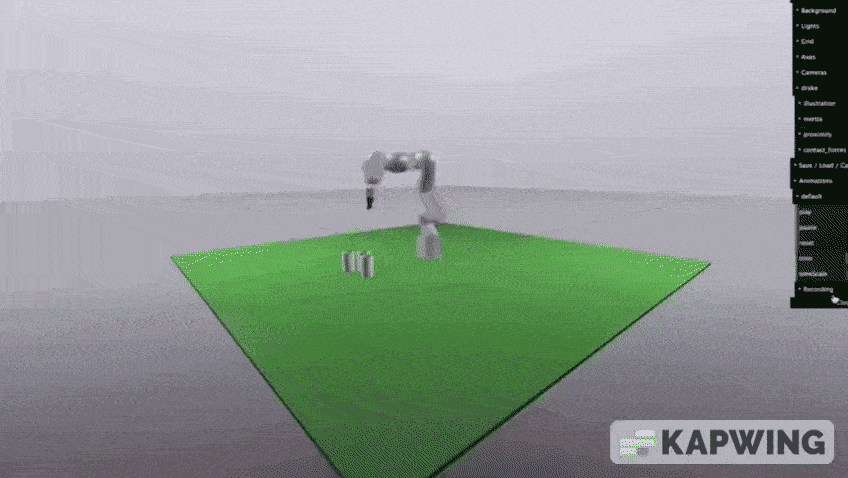
We aren’t controlling the bot; it’s moving by itself! The visual perception system uses depth image input from RGB-D cameras to locate where the cups are in the environment, and the grasp- and motion-planning system uses inverse kinematics to maneuver the cups with the robot hand.
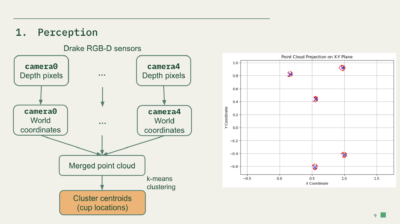
Cool slide from our presentation
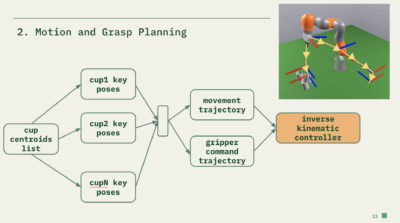
More cool words
We coded this with the Python version of Drake, which can be used for creating robotics simulations like these. A lot of time was spent trying to understand the documentation and how to make sense of Drake in general, but we were miraculously able to deliver the results that we wanted.
21W.744 – The Art of Comic Book Writing
Final script, and some storyboards
This class wasn’t about making an entire comic, but about writing the script for one. Although more rigorous than I expected, I really enjoyed doing the assignments and felt like I improved as a storyteller by the end.
Whether I actually improved or not is up for debate. I couldn’t decide what to write about for my final project, so I took a theory I have about Tom Cruise and wrote a 20-page script based on it. The final script is about an alien who crash-landed on Earth, and disguised himself as a Hollywood actor so he could get rich enough to buy a spaceship and return to his home planet. My professor had to read the whole thing with his own eyeballs.
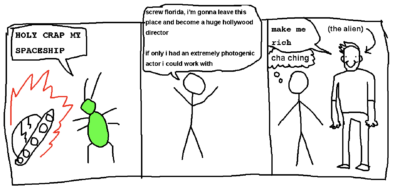
The CliffNotes version
What matters is that I had fun. Also, I somehow got an A.
9.66/6.4120 – Computational Cognitive Science
Research paper
The final project generally had to be a model that attempts to reflect an aspect of human cognition in some way. Unfortunately, I procrastinated until I only had two weeks to work on it. Luckily, the TAs gave us a list of project ideas that we could choose from.
Based on one of the suggestions, I tried to make a Bayesian model for how a player’s confidence changes over the course of a word-guessing game, where they have to guess the letters in the mystery word (think Hangman or Wordle). “Confidence” means how confident the player feels that they know what the right word is.
I collected some data from friends, and then I coded a model that inputted every game state in a single game. A game state included which letters the player has guessed correctly/incorrectly so far. For each game state, the model returned (1) what word it thinks it is (2) how confident it is in its guess.
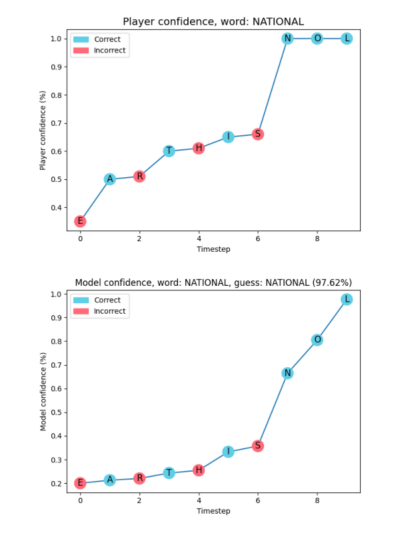
The player’s confidence over the course of a game, compared to the model’s confidence
The model didn’t do a good job at matching the data, as expected. I somehow pieced together a whole research paper with the results that I got. I even made the outrageous claim that this project had “possible implications” for how educators could model students’ confidence levels from test results. Somehow, I got a decent grade.
